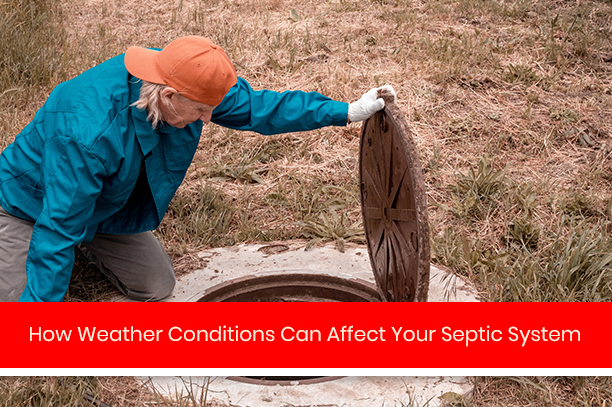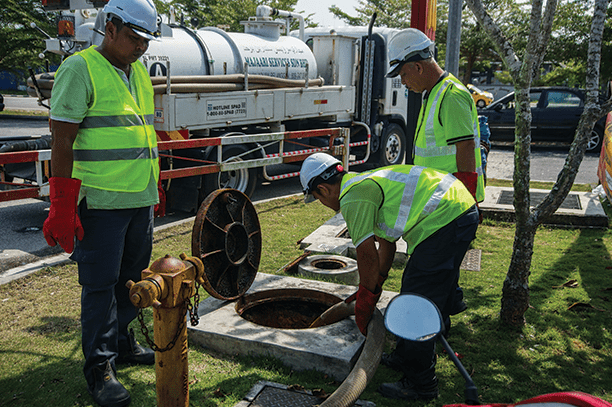Installing a system that treats wastewater locally, often in a rural region without access to municipal sewer systems, is known as a septic system. The installation process is challenging and requires specific tools and knowledge to ensure the system is installed correctly and operates as intended.
Poor installation can result in water pollution, property damage, and costly repairs.
Engineered septic systems are the most expensive to install due to the additional equipment and installations needed. Installation costs vary depending on the kind of system you opt for in your house.
Importance of Proper Septic System Installation
Proper septic system installation is essential in every aspect for various reasons. This includes:
- The septic system helps in wastewater management. If you inappropriately install the septic system, that may cause environmental harm and water pollution.
- Illegal installation of the septic system may make it challenging to sell and obtain insurance for the home.
- Septic system installation costs may vary by the type of septic system you are purchasing for your household.
- Septic system design, installation, servicing, and environmental conditions are key to how long your septic system will sustain.
Common Mistakes to Avoid During Septic System Installation
To avoid pumping the tank more frequently, selecting the appropriate size based on your household size is crucial. To prevent such issues and maintain the system’s durability, septic tank installation must be done correctly.
The second common mistake to avoid during septic system installation in Sherwood is not having appropriate permits, which can turn out to be quite expensive. Thirdly, careful excavation is necessary to prevent damage to the septic system. Fourth, it’s essential to evaluate the soil to make sure that it is acceptable for treating liquid residue around the septic tank.
When you are thinking of installing a septic system, there are a few common mistakes that you need to avoid. First and foremost is settling a small septic tank that may cause overflow of the septic tank, leading to flooding, sewer backups as well as slow drains.
If you choose the wrong septic system of the wrong size, then you may end up spending a lot of money on that.
1. Choosing the Wrong System for Your Property
Selecting the wrong septic system for the property will be of no use. It comes in various sizes, and it is essential to select the appropriate one depending on the size of the home to prevent installing a septic tank, which will not be able to manage all the waste. Installation of a small tank may result in tank overflows, slow drains, flooding, and sewer backups. In case you are having trouble choosing a septic tank, you can always take the help of an expert.
2. Poor Drain Field Placement and Design
Improper drain field layout and design should be avoided when installing septic systems. The position of the drain field, a crucial component of the septic system, should be carefully planned to allow for proper drainage.
To ensure proper drainage, the drain field must be situated away from the septic tank and devoid of any structures or vegetation with deep roots. Also, the soil around the drain field needs to be adequate for removing liquid waste.
3. Lack of Proper Installation Techniques
Using ineffective installation techniques is a common mistake to avoid while establishing a septic system. Proper excavation is essential when setting up a septic system, and doing it incorrectly can put the system at risk.
The excavation area must provide a secure working space for the installation crew, and the hole’s dimensions should give enough space for backfilling and proper compaction.
Also, it’s critical to assess the soil to ensure that the vicinity of the septic tank is suitable for handling liquid waste. If the wrong tank size is fitted, the system could also encounter problems.
It is essential to obtain the necessary permissions and hire experts to construct the septic system to avoid mistakes that could decrease the efficacy and durability of the system.
4. Failure to Maintain the System
The septic system might develop issues if it is not maintained, which is a common error. The best way to avoid a septic system failure is regular maintenance, which includes pumping the tank every three to five years and examining the complete system every one to three years.
The number of people living in the home, the volume of solid waste produced, the size of the tank, and how often the septic tank needs to be pumped are all factors that must be addressed.
Call American On-Site Septic
To run the wastewater treatment smoothly, you need to hire professionals for septic system installation. American On-Site Septic has years of experience in the installation, inspection, and repairs of the septic system providing septic system installation services in Sherwood and nearby areas. For any queries regarding our services, book your appointment today.






